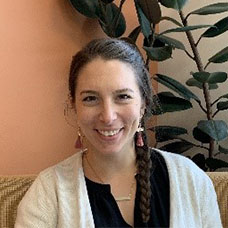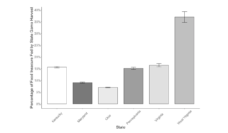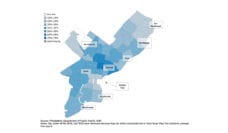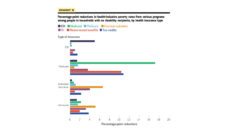On the surface, it might seem that public assistance programs are a welcome salve on the open wound of deep poverty and adversity. But, when we look at the way the programs are administered and funded, it is clear that our state and federal systems just let the wounds fester, regardless of human suffering and financial cost.
Conversations within the U.S. government constantly revolve around ways to save money and make services more efficient and cost-effective. It would seem that an evidence-based opportunity to integrate Temporary Assistance for Needy Families (TANF) and Medicaid — two public assistance programs that often serve overlapping clients — would be welcomed with enthusiasm. Unfortunately, this was far from our experience.
Our program, the Building Wealth and Health Network (The Network), is a trauma-informed, healing-centered, financial empowerment program for families participating in public assistance. The Network program is integrated into TANF by replacing the job search participation requirements with Network classes. The classes are rooted in evidenced-based group processes that address trauma and adversity and promote healing and social connection.
Trauma-related symptoms and behavioral health issues can limit a person’s ability to get and maintain a job. In turn, this limits a family’s financial stability. The Network’s empowerment-focused curriculum pairs financial knowledge (i.e., budgeting and saving, how to read/fix your credit score, insurance) with relationship building, goal setting and empowerment. Participants in The Network also open a savings account and receive a 1:1 match of their deposits (up to $20/month). The Network reduces depression and economic insecurity and helps people work through their exposure to adverse childhood experiences. Each of these issues can have a strong negative impact on employment.
Because these health conditions often need medical attention, we sought to integrate funding streams of TANF and Medicaid to pay for the program. Linking TANF and Medicaid funding streams would provide significant benefits for families to address both income and health needs and would reduce the administrative and financial burdens for organizations attempting to run The Network. We encountered several barriers while trying to link these two funding streams.
The first barrier we encountered was the surveillance culture existing within TANF, in which individuals are treated as “cases to be managed” rather than human beings who need support to thrive and live well.
The first barrier we encountered was the surveillance culture existing within TANF, in which individuals are treated as “cases to be managed” rather than human beings who need support to thrive and live well. TANF’s primary focus is getting people into jobs quickly (often low-wage and part time jobs, rather than sustainable, long-term employment or career development). This does not allow people to improve and sustain true economic security (i.e. through savings, and financial stability), or long-term overall family well-being. Studies have shown that financial well-being and physical and mental health are deeply connected, so a program intended to help its participants “achieve self-sufficiency” (one of TANF’s stated goals) must take both into account.
Institutional racism and gender discrimination within TANF pose another barrier. For example, women make up the greatest percentage of adults participating in TANF, and TANF grant amounts are lowest and most restrictive in states with higher percentages of Black residents.
Our goals for aligning TANF and Medicaid funds were to provide streamlined publicly funded support for low-income families. Since nearly all families participating in TANF also qualify for Medicaid healthcare coverage, allowing Medicaid dollars to support TANF participants could improve families’ health and financial well-being. This type of coordination of Medicaid funding with other public assistance programs is not unheard of – in some states Medicaid dollars help fund housing-first and food assistance programs.
We organized a group of important stakeholders to carry out this vision: representatives from the state who could allocate Medicaid funding, our non-profit grant supporters, and a team of university researchers. Despite the group’s best intentions, we experienced the third barrier of misaligned partnership values, priorities, and capabilities. Connecting across government and academic sectors proved challenging for grant timelines (for example, government partners were constrained by timelines that were too slow for the philanthropic grants for the academic partners).
Despite these barriers, we believe there are many solutions. For example, we suggest that TANF administrators focus on goals that are more holistic and long-term, rather than short-sighted and focused solely on immediate workforce entry. To address the second barrier of racism and gender discrimination, we suggest raising the TANF grant amount, advocating for fair wages as well as instituting reparations processes. Since publishing our paper, we have seen organizations commit to anti-racist and abolitionist work and would include these as additional solutions. For the third barrier, we suggest large scale innovative programs within the government to promote healing, social support and long-term economic security.
Yes, some of these barriers are deeply ingrained within our society and it might seem impossible to make lasting changes. However, visionary administrators, scholars and activists working to transform public assistance have already sought out healing approaches that promote dignity and well-being. State and federal administrators should change existing programs such as TANF that simply perpetuate poverty (through prioritizing low-wage employment, maintaining extremely low asset limits and a failure to update monthly payment amounts since 1994), and take more risks that can support and promote the resilience and well-being of families. This can come in the form of investing in universal basic income (UBI), paid parental leave, raised minimum wage, reparations processes and other forms of expanding and strengthening our social safety net.
Photo via Getty Images
















